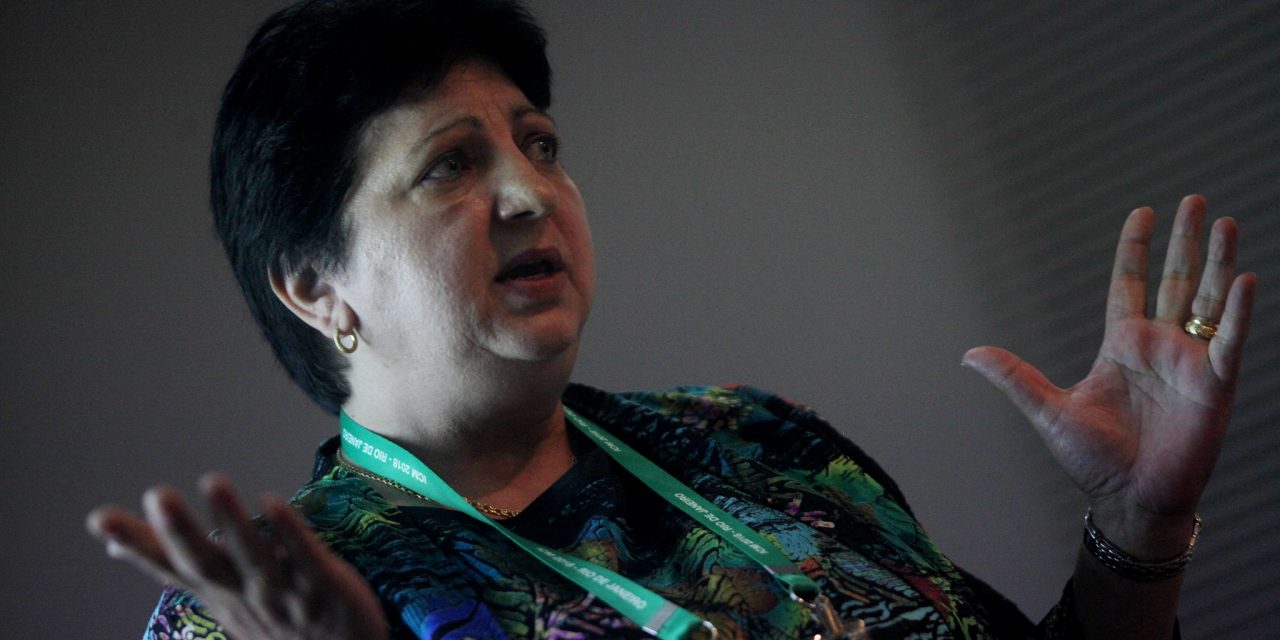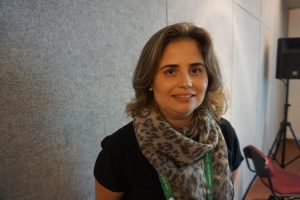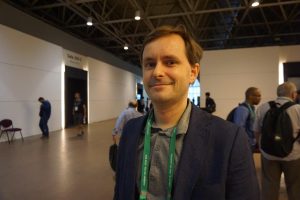August 2, 2018, 7:05 pm

In a series of 20-minute presentations, math teachers from all over the world shared tips to optimize math education for students ranging from elementary to graduate level.

Paula Monteiro Baptista
Paula Monteiro Baptista is a math teacher who works with Brazilian professor Ana Maria Martensen Roland Kaleff to develop unique strategies in teaching geometry to 8 to 15-year-old students. They have created an inverse method to teach the concepts, through activities. The concepts themselves are only introduced and named at the very end.
In one activity, the students are given a printed image and a mirror. Another handout shows reflective images that they must replicate with the mirror. By placing the mirror on the original image, the students are learning about the ‘axis of symmetry’.
Antti Rasila, of Aalto University in Finland, helped to create a consortium of universities that provide high-level teaching math materials online in what is known as Abacus Material Bank. All Finnish universities are members of the consortium, and foreign universities are starting to join. Partners work together to develop high-quality and ready-to-use STEM teaching material, including advanced math content, that is not otherwise available online.

Antti Rasila
“It’s like a potluck,” Rasila said. “We have a picnic together and everybody brings his or her own additions to the meal.” Worried that e-learning will “make people stupid,” motivated him to “develop a learning platform that will allow for real mathematics.”
Constanta Olteanu, a professor in math at Linneaus University in Sweden, presented her research project; and analysis of specific tactics for variation learning in math. When using variation theory, teachers identify the aspects of the lesson content that is critical for student understanding. The teacher can use patterns of variation in these critical aspects to help students to discern differences and therefore learn. Olteanu studied students and teachers over a three year period and compared different math teaching tactics. She also introduced the concept of rhizomatic thinking, which involves creating new connections at every point. Olteanu’s research found that recycling and repetition can be used to create variation by using different examples to illustrate the same learning point.
Math couple David Torain and Sandra Richardson shared their experience in organizing math research for undergraduate students. Richardson works in undergraduate education at the National Science Foundation in the United States. While the goal of undergraduate and graduate research are the same, she said, research processes are quite different, as the undergraduate is at a lower learning level.
Research at undergraduate level greatly increases retention in STEM disciplines, provides career preparation, engages students in hands-on learning and helps students to develop critical thinking skills. Torain cited a research example he supervised at Montgomery College, where he is a professor of math. Two students used Laplacian constraints to analyze traffic flow in Washington D.C.

David Torain and Sandra Richardson